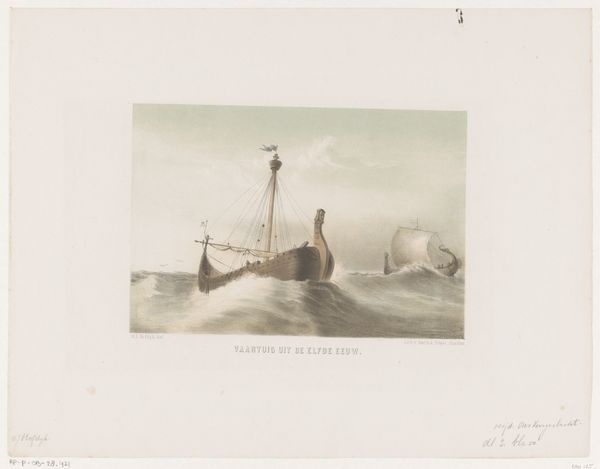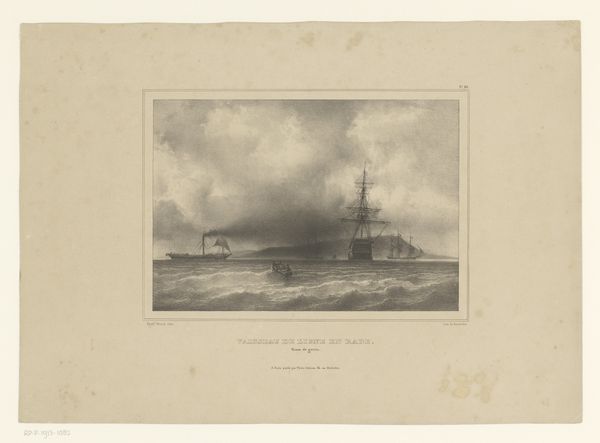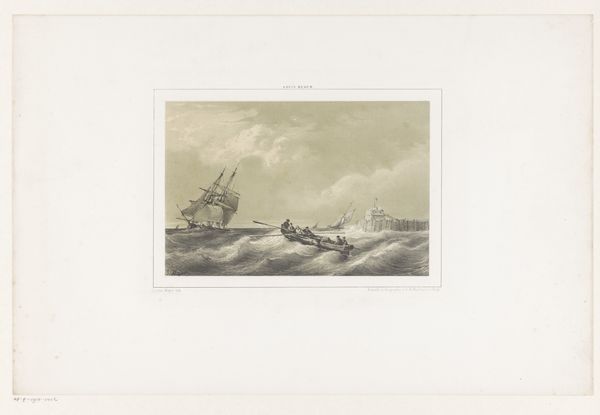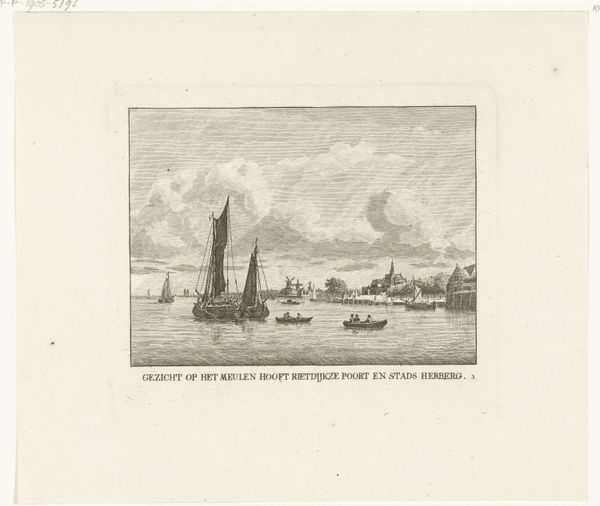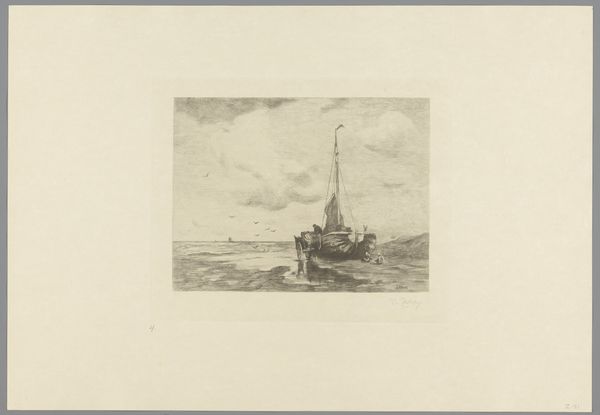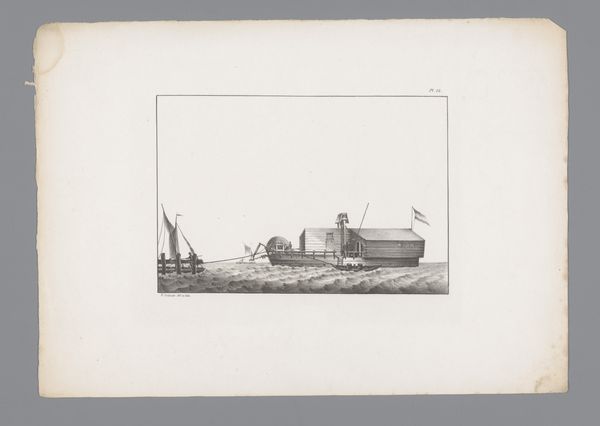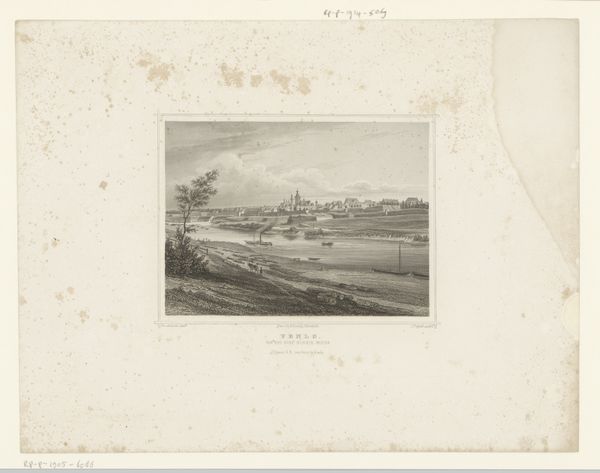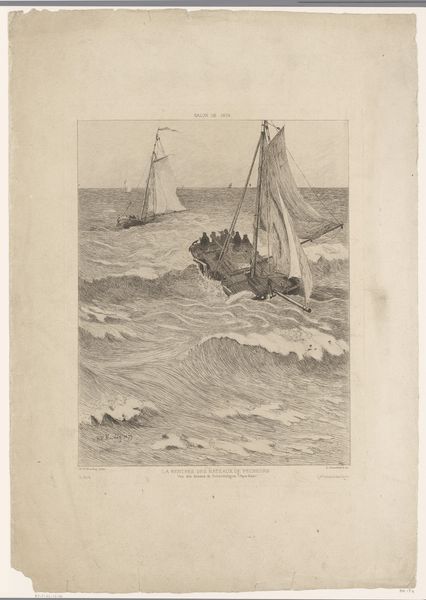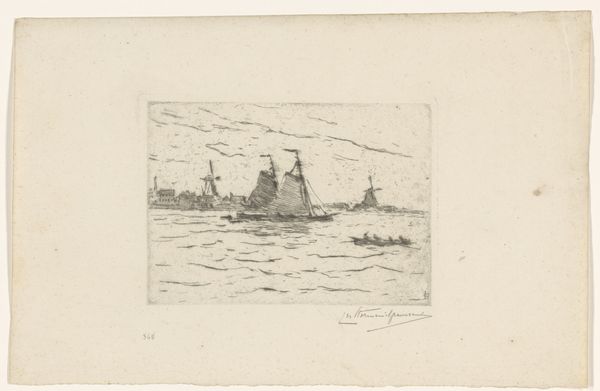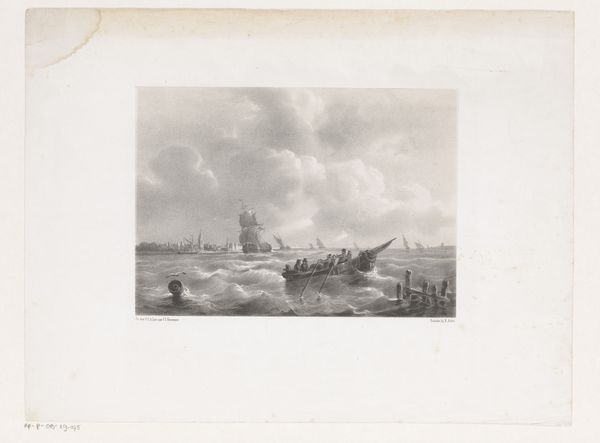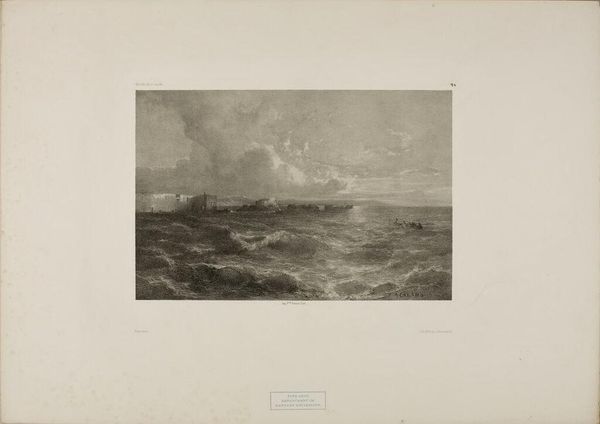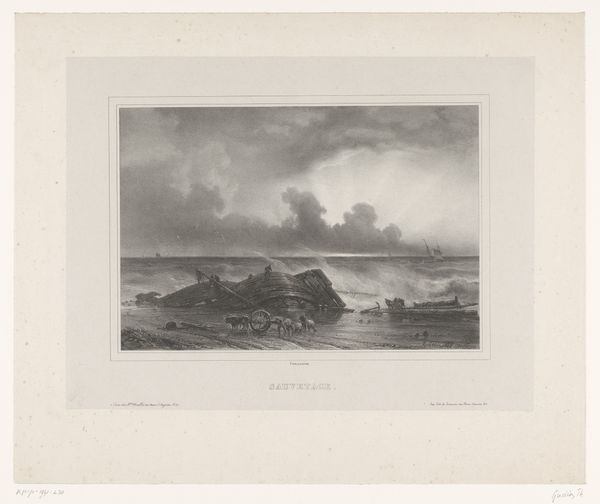
drawing, print, paper, ink
#
drawing
#
narrative-art
# print
#
caricature
#
paper
#
ink
Dimensions: height 215 mm, width 275 mm
Copyright: Rijks Museum: Open Domain
Curator: This drawing, titled "Spotprent," was created in 1877 by Johan Michaël Schmidt Crans, using ink on paper as a print. The title translates to something like "caricature". My immediate reaction is this is a little bleak, but in an amusing way, perhaps. There's something about the lone figure on that primitive-looking vessel juxtaposed with the struggling swimmers. It’s definitely understated. Editor: Indeed. Given its period, it's intriguing to consider the materials available and the socio-political climate surrounding its production. The labor involved in creating a print like this, and its likely dissemination in newspapers or pamphlets, suggests a specific engagement with public discourse and political commentary of the time. Curator: Absolutely, a critical engagement is very much baked-in. It also just occurred to me the image almost certainly relates to Dutch naval endeavors, possibly botched attempts and a comment on public expenditure. The contrast between the advanced "submarine" and the swimmers creates this fantastic sense of the absurd. You have a sense that what might appear an advancement, at closer range it is actually floundering. Editor: Precisely. The caricature, a pointed societal critique using mass media and distributed as such. Examining the ink and paper choices can offer hints about production values and intended audience too – whether meant for an elite circle or a broader public consumption. And of course, this work reflects an interesting point in time around 19th century advancements in shipbuilding, labor policies, economics related to Dutch industry... all playing on ideas around "progress". Curator: Right. It has the sort of satirical snap of someone like Hogarth or Gillray from a century before. This visual gag almost feels very modern in its self-deprecating quality. Editor: So we return to production again—the accessibility facilitated by the printing medium gives power to satire as a form, right? Something previously confined to court circles and now accessible to the coffee houses and public sphere. It is worth digging into similar artists’ process to understand their studio management too, understanding them as factory. Curator: Thinking about those submerged figures – perhaps an allusion to an event, a famous incident. There's this strange little narrative frozen in ink. Editor: A pointed criticism indeed! I find it fascinating to think about the original readers encountering this image. To consider their social, financial status in relation to that of the patrons, politicians and industry in charge of the construction. And of course the materials themselves, not simply how they communicate social critique but how they facilitated the work in the first place! Curator: Indeed, that interplay between content and context really enhances the image’s significance.
Comments
No comments
Be the first to comment and join the conversation on the ultimate creative platform.
